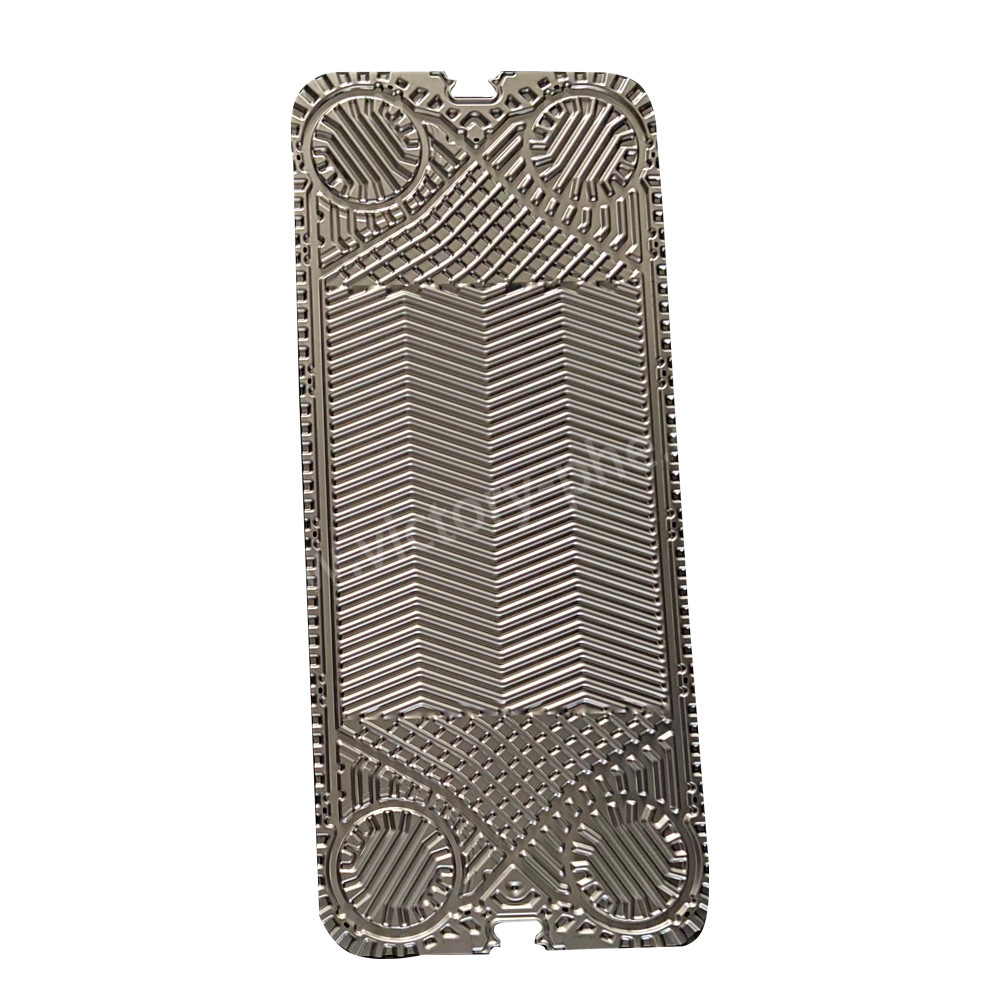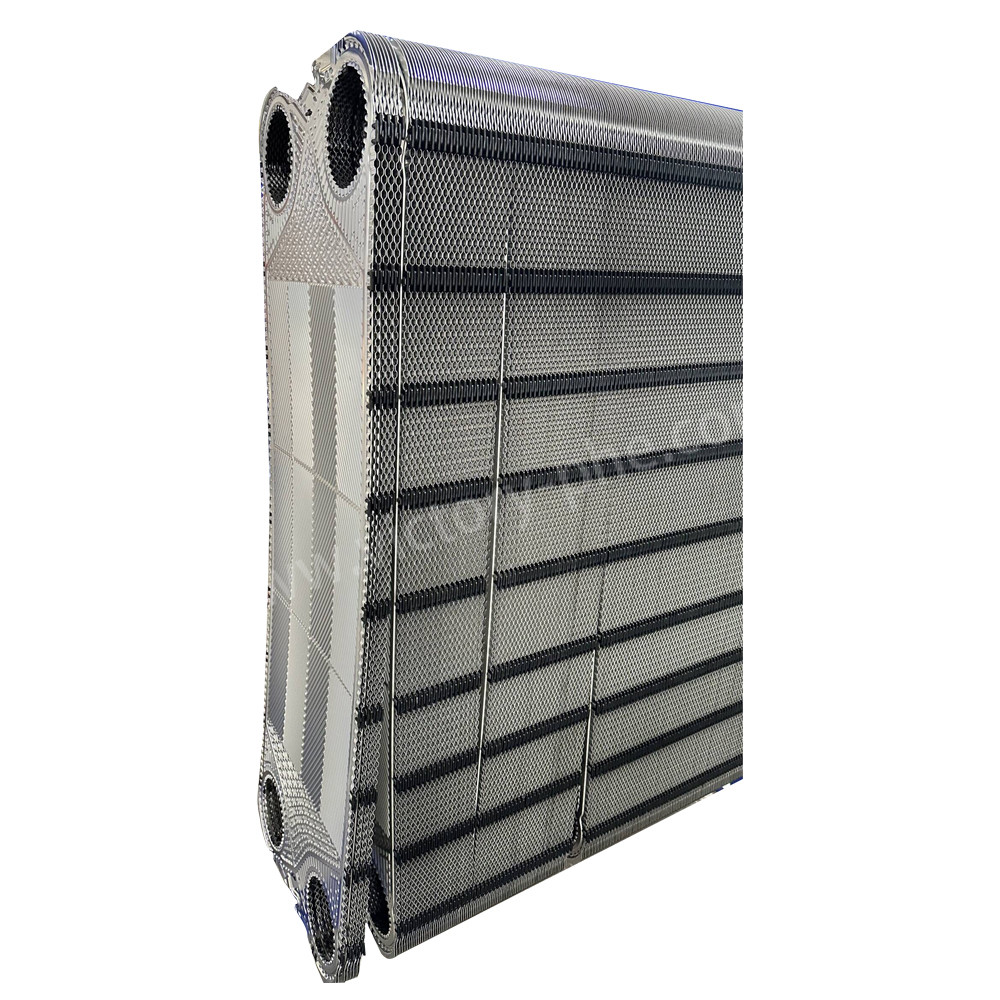| Sign In | Join Free | My himfr.com |
|
| Sign In | Join Free | My himfr.com |
|
| Ask Lasest Price | |
| Brand Name : | |
| Model Number : | M3、M6、M6-D、M6M、M6MC、M10B、M10M、M15B、M15M、M15MC、M20M M20B、MX25B、MX25M、M30、TS6、TL6B、TS20、TL10B、TL10P、T20B、T20M、T20P、TL35B P16、P26、P36、AK20、JWP26、JWP36、M6MW、M10BW、MK15BW |
| Certification : | ISO SGS |
| Price : | 50 - 500pieces $20-$30 |
| Payment Terms : | T/T, L/C, Western Union, |
| Supply Ability : | 50000pcs per month |
| Delivery Time : | 15 days |
Product Description
How to make choice of the plate material for Heat Exchanger Plates
Heat Exchanger Plates
1. The working principle of the plate heat exchanger is through the heat transfer mechanism. According to the laws of thermodynamics, heat is always spontaneously transferred from high-temperature objects to low-temperature objects. Two fluids with different temperatures flow in a space separated by the wall. Through wall heat conduction and fluid convection on the wall surface, heat exchange between the two fluids is promoted. Under the same flow resistance and pump power consumption, its heat transfer coefficient is about three times higher than that of a shell-and-tube heat exchanger. It is a key, efficient and new equipment for rational utilization of effective resources, conservation and development of new energy.
2.When there is a temperature difference between two fluids, heat must be transferred. During the forced convection heat transfer process between the two fluids with a temperature difference, the heat exchange plates of the plate heat exchanger are metal with a certain corrugated shape. The surface of the plate is optimized with a corrugated wave structure to achieve a heat exchange rate of more than 92%. A thin rectangular channel is formed between each plate. Even if the fluid flow rate is below the Reynolds number, the movement of the fluid between the plates is three-dimensional. Movement causes the fluid to form violent turbulence, reducing boundary layer thermal resistance and enhancing heat transfer efficiency.
3. The working principle of the plate heat exchanger enables the plate heat exchanger to have the characteristics of high heat transfer efficiency, small footprint, wide application range, and flexible operation.
The plate materials used in plate heat exchangers correspond to the exchange media are:
1. Stainless Steel: Compatible with water, oil, and many chemicals.
2. Titanium: Suitable for corrosive media like seawater and acids.
3. Nickel Alloys (such as Inconel or Hastelloy): Resistant to high
temperatures and corrosive fluids.
4. Carbon Steel: Commonly used for water-to-water heat exchange.
5. Copper Alloys: Suitable for high thermal conductivity
applications.
These materials are chosen based on the compatibility with the specific exchange media to ensure efficient heat transfer and durability in plate heat exchangers.
Heat Exchanger Plates material
1. Stainless steel SUS304 SUS316L
Purified water, river water, food oil, mineral oil
2. Industrial pure titanium and titanium-palladium alloyTi tanium
and Pal ladium
Sea water, salt water, salt compounds
3. Hastelloy Alloy
Concentrated sulfuric acid, hydrochloric acid, phosphoric acid
4. Nickel
High temperature and high concentration caustic soda
| Brand | Model |
M3,M6,M6-D,M6M,M6MC,M10B,M10M,M15B,M15M,M15MC,M20M M20B,MX25B,MX25M,M30,TS6,TL6B,TS20,TL10B,TL10P,T20B,T20M,T20P,TL35B P16,P26,P36,AK20,JWP26,JWP36,M6MW,M10BW,MK15B |
| Material | Specification |
| Stainless Steel | SUS304 316 316L 310S 904 |
| Titanium and titanium-palladium alloy | TAi TAi-Pd |
| Hastelloy | C276 D205 B2G |
| Nickel | Ni200 Ni201 |
| Molybdenum | 254 |
Applacations
The application areas of heat exchanger plates are as follows:
1. Widely used for Hotels
2. Garment Shops
3. Building Material Shops
4. Machinery Repair Shops
5. Manufacturing Plant
6. Food & Beverage Factory
7. Farms, Restaurant,Retail, Food Shop
8. Printing Shops, Construction works
9. Energy & Mining, Food & Beverage Shops
Q&A
1. Question: What plate material is commonly used in plate heat
exchangers for water, oil, and various chemicals?
Answer: Stainless Steel is commonly used as the plate material for
compatibility with water, oil, and many chemicals in plate heat
exchangers.
2. Question: Which plate material is suitable for corrosive media
like seawater and acids in plate heat exchangers?
Answer: Titanium is a suitable plate material for corrosive media
like seawater and acids in plate heat exchangers.
3. Question: What type of nickel alloys are resistant to high
temperatures and corrosive fluids in plate heat exchangers?
Answer: Nickel Alloys such as Inconel or Hastelloy are known for
their resistance to high temperatures and corrosive fluids in plate
heat exchangers.
4. Question: Which material is commonly used for water-to-water
heat exchange in plate heat exchangers?
Answer: Carbon Steel is commonly used for water-to-water heat
exchange in plate heat exchangers.
5. Question: What type of materials are suitable for applications
requiring high thermal conductivity in plate heat exchangers?
Answer: Copper Alloys are suitable for applications requiring high
thermal conductivity in plate heat exchangers.



|